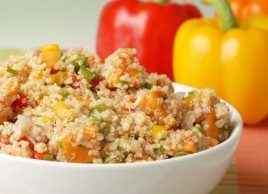
Seven picks from South America
It’s not that we don’t have healthy foods in our Canadian backyards. But sometimes, it’s fun to experiment with nutritious ingredients from farther afield. Try these seven picks from Peru, Brazil and the rest of South America for a creative twist on your regular meal plans.
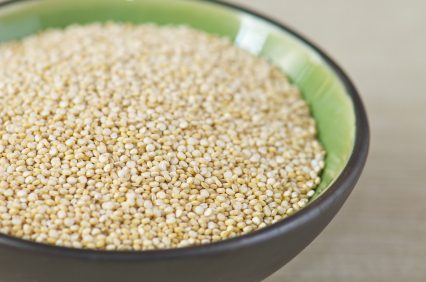
1. Quinoa
Quinoa (pronounced “KEEN-wa”) is a protein-rich, gluten-free pseudograin (technically a seed, functionally a grain) that hails from the Peruvian highlands. Tasty and nutritious (it’s a good source of fibre, folate, magnesium and phosphorus), quinoa’s best feature is perhaps how quick and easy it is to prepare-unlike most whole grains, a pot of quinoa can be cooked in 15 minutes-plus how attractive it is once cooked.
Good to know: More quinoa products are becoming available, including quinoa flour, with a rich, earthy flavour similar to sesame or peanut butter that matches well with strong flavours like beets, according to Kim Boyce, author of cookbook Good to the Grain: Baking with Whole-Grain Flours. Gluten-free quinoa pastas are also available at many retailers.
Try it in:?
• Warm Shiitake Walnut Salad with Quinoa
• Quinoa Porridge
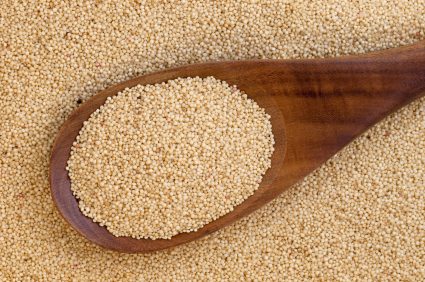
2. Amaranth
Another pseudograin, amaranth is less well known than quinoa but valued in South American cultures for how easy it is to grow, even in infertile soils. Snack bars containing puffed amaranth are a common sight in local stores (we’ve even spotted them in the airport in Cancun) and amaranth flour has a rich flavour that pairs well with strong-flavoured sweeteners like honey and molasses, notes Boyce. Amaranth has a similar nutritional profile to quinoa but is also rich in iron-a one-cup serving of cooked amaranth contains 29 percent of the average person’s RDI.
Good to know: Popped amaranth is easy to make at home (watch this video for instructions) and can be added to salads, cookies or homemade energy bars.
Try it in:?
• Apple Pie Millet Breakfast Bake from Alberta-based nutritionist and blogger Leanne Vogel
• Amaranth tabouli, pudding or stir-fry from B.C. company Salt Spring Seeds
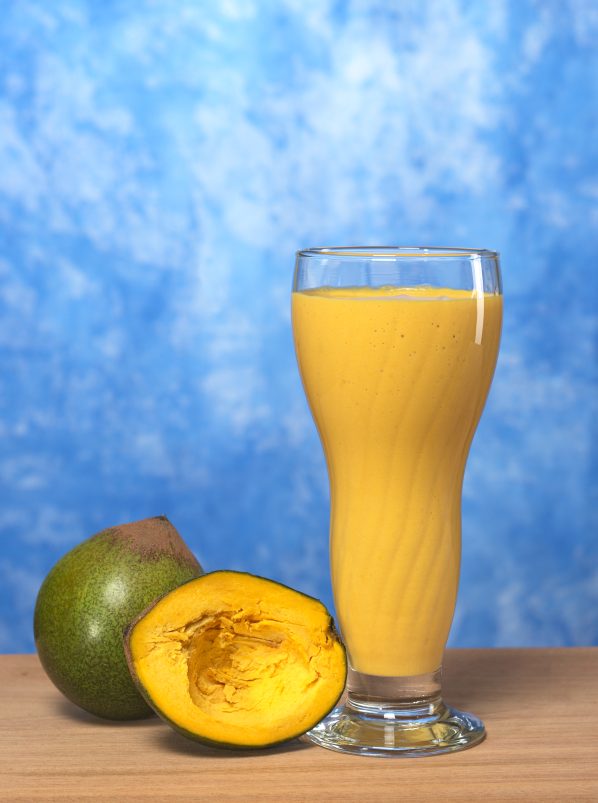
3. Lucuma
Lucuma (the stress is on the first syllable) is a fruit that’s barely known here, but in Peru you’ll find it everywhere in desserts-and lucuma ice cream is said to be the most popular flavour in that country. According to food company Navitas Naturals, which sells lucuma powder, the sweet fruit grows on an evergreen tree and has been harvested since ancient times in the highlands of what is now Peru, Bolivia and Ecuador. Its flavour has been compared to maple and sweet potato and it’s valued as a low-sugar sweetener containing nutrients such as iron, calcium, beta-carotene and niacin.
Good to know: In addition to its powdered form, lucuma is also available in some regions as frozen pulp-inquire at your local Latin American grocer, if you have one.
Try it in:?
• Holiday Chia Pudding
• Lucuma Ice Cream
• Hazelnut Lucuma Smoothie
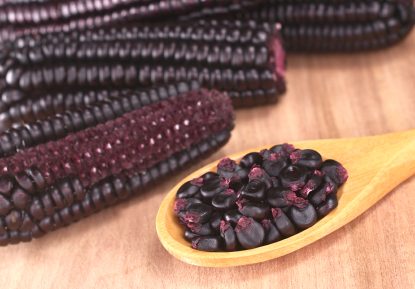
4. Purple corn
Commonly found in Peru made into chicha morada, “purple corn drink,” purple corn is one of many varieties of corn that have been cultivated and developed in Latin America over millennia. Not only is it pretty (and extracts from purple corn are used as a natural food colouring), but it’s nutritious, too: Purple corn is said to be very rich in antioxidants (possibly more than blueberries) and have benefits for all kinds of health conditions.
Good to know: Look in health-food and gourmet stores for dried purple corn kernels, purple cornmeal, purple corn flour and even purple popcorn; if you’re a gardener, you may be able to find purple corn cultivars for sale at heirloom seed companies.
Try it in:?
• Gluten-Free Purple Corn and Banana Muffins
• Purple Corn and Cacao Drink
• Blue and Purple Corn Bread
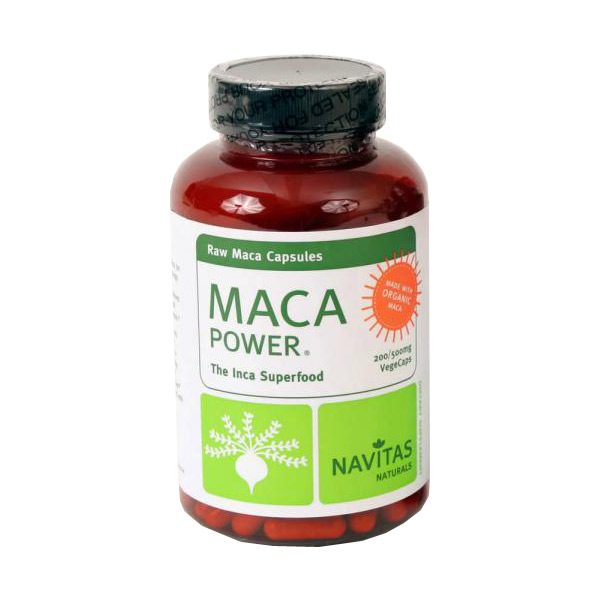
5. Maca
Another plant from the Peruvian highlands, maca’s root is harvested for its nourishing properties and said to increase energy and fight fatigue. Maca is an adaptogen, according to Canadian athlete Brendan Brazier, author of cookbook Whole Foods to Thrive; he says maca helps the adrenal glands regenerate, thereby combating the negative effects of stress on the body and even helping you sleep better.
Good to know: Maca is sold in powdered form; Brazier recommends choosing the gelatinized form as it’s easier to digest, dissolves more easily and has a better taste.
Try it in:?
• Superfood Energizing Smoothie from Toronto-based nutritionist Joy McCarthy
• Cacao and Maca Milkshake
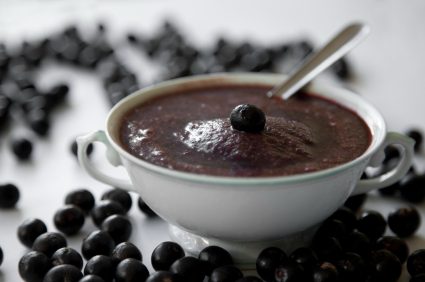
6. Acai
Also spelled açaí (and pronounced ah-sigh-ee), this purple Brazilian berry has made strides in North America as an antioxidant-rich ingredient in smoothies and juices. A favourite of Oprah regular Dr. Nicholas Perricone, author of Forever Young, acai berries contain good amounts of fibre, phytosterols and healthy fats on top of the antioxidants.
Good to know: Skip the premade concoctions at your food-court juice bar (they’re usually packed with added sugar and fat) and make your own smoothies at home with convenient frozen-pulp packs from your health-food store. Or mix acai juice with sparkling water for a nutritious homemade pop alternative.
Try it in:?
• Blueberry Acai Smoothie
• Chocolate Acai Pudding
• Acai Breakfast Bowl
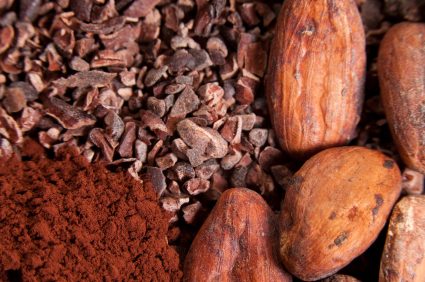
7. Cacao
Admit it-we’ve all justified chocolate consumption by citing its healthful properties. After all, it’s said to improve your skin, fight cancer cells, boost brain power and reduce fatigue. But let’s be honest: Most chocolate foods we choose are too high in unhealthy fats, sugars and other additives to really be considered a health food. Instead, make your own chocolate goodies with cocoa powder, raw cacao powder or even plain cacao nibs, mixed with other healthy plant foods.
Good to know: It may be best to eat cacao in vegan recipes-milk is said to cancel out many of the healthful properties cited in studies. And many say raw chocolate (made from dried but unroasted beans) is the way to go for optimal nutrition.
Try it in:?
• Hot Chili Chocolate, made with a non-dairy milk alternative such as almond milk
• Chocolate Almond Smoothie
• Spicy Chocolate Energy Bars
